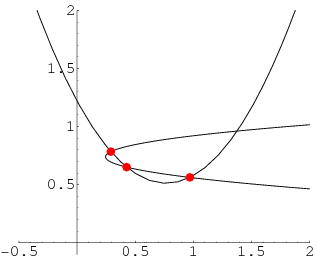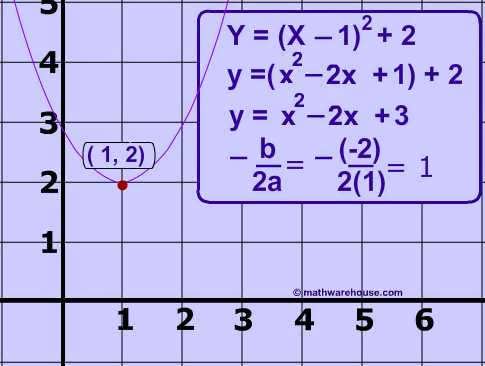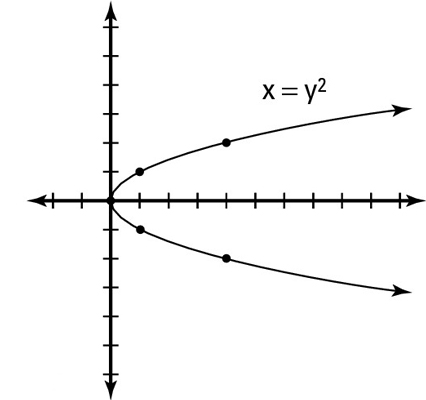It seems like yesterday we have started our journey.
It was my pleasure having you as my students.
I wish you all the best during tomorrows exam and in your future endeavors.
Take care.
Mr.P
Pre-Calculus 40S Fall 2011 Section B
Sunday, January 22, 2012
Wednesday, December 21, 2011
last post for 2011!!!

today we knew how to find the equation for a parabola
EX. find the equation for the horizontal parabola with vertex at 4,1 and passing through the point 2,5. you might want to label your given points h,k and x,y for you not to get confused.
use the formula (x-h)=a(y-k)^2 from here all you have to do is plug in the values and solve.
we also knew how to find the vertex of a parabola if we are given an equation and a passing point.
EX. if the parabola y^2+x-6y-m=0 passes through the point (-3,5) find the vertex.
first step is to label the given passing point x and y for you not to get confused, next is to plug -3 to the x in the equation and 5 to the y's in the equation and solve for m. in this case your m shall equal to 8. next thing for you to do is plug your 8 for m to the equation. DO NOT PLUG -3 AND 5 TO YOUR x AND y, complete the square and solve algebraically. your vertex should be at (1,3). that's all and thank you.
Tuesday, December 20, 2011
Conics

In mathematics, a conic section (or just conic) is a curve obtained by intersecting a cone (more precisely, a right circular conical surface) with a plane. In analytic geometry, a conic may be defined as a plane algebraic curve of degree 2.
Circle

The equations for circle are :

The General formula for circle is = Ax^2 + By^2 + Cx + Dy + E = 0
Distance
Distance Formula is :

It is use to find the distance between the points and with that we can find the radius of a circle given the points of it.
Midpoint
Midpoint formula:

We can use this formula to find the center of the circle.
Parabolas

There are vertical and horizontal parabolas.
Vertical Parabola
We already know that the vertical parabola has an equation of :
y = a((x-h)^ 2 ) + k
where a is the coefficient that is responsible for the horizontal size of the parabola and whether the parabola opens up or down
where h is read as opposite and is vertical symmetry and a point in x axis
where k is read as is and a point in y axis
Example:

Horizontal Parabola.
Our normal parabola opens up or down, but this parabola opens to the left or right. The equation is:
x = a((y-k)^2) + h
Here's an simple equation and example of a Horizontal Parabola

Remember that in Vertical Parabola if a is positive the parabola goes up and down if negative and in Horizontal Parabola if a is positive it goes to the right and left if negative.
So that's mostly it.
Here's a circle, not an ordinary circle though. I don't know if you know this already. If you don't, look at the center of the circle and fixate your eyes at it then try looking at it closer then further, then closer, then further, over and over again. ;)

It moves right? :O lool

1 more day to goooo!! :D You know what it is ;P

4 more days 'til Christmas! Merry Christmas Everyone. ;)

-Paul
Friday, December 16, 2011
November Hall of Famer
And the winners are:
1 - Roxanne - 7 points - 3 bonus points
2 - Carjelu and Gurvinder - 6 points - 2 bonus points each
3 - Karla - 4 points - 1 bonus point
1 - Roxanne - 7 points - 3 bonus points
2 - Carjelu and Gurvinder - 6 points - 2 bonus points each
3 - Karla - 4 points - 1 bonus point
Thursday, December 15, 2011
Sample Space
Hi fellow PreCal classmates! This is Paulene J Our blog site is not up to date anymore just because I forgot to post mine on time & I'm very sorry about that!
Anyways.. last December 06, we started a new lesson called Sample Space. It’s a very short topic under the Probability Chapter/Unit.. and here’s a recap! J
Sample Space refers to the complete set of all possible outcome. These are often represented using tree diagrams and ordered pairs. The probability that a specific event will occur can be described as.. P(E) = Success ÷ (sample - space)

There are also two events that can occur;
- Dependent events is when the outcome of one event affects the outcome of a second event.
- Independent events is when the outcome of one event does not influence the outcome of a second event.
Thursday, December 8, 2011
November Hall of Famer
Please cast your votes (under comments) for the Hall of Famer of November.
Thank you.
Thank you.
Monday, December 5, 2011
Binomial Theorem
Hey fellow students ! last Friday we talk about binomial theorem which is discovered by a very smart man whose name is pascal . This theorem is basically a much quicker or less slower way of expanding a binomial expression that is raised to a very high power . To help us understand it i try to look for a site that can explain it better than me . So this what i found
and i also found a very helpful video (: i hope this will help you guys even more .
http://www.youtube.com/watch?v=bMB8qDYa8N0
and i also found a very helpful video (: i hope this will help you guys even more .
http://www.youtube.com/watch?v=bMB8qDYa8N0
Subscribe to:
Posts (Atom)